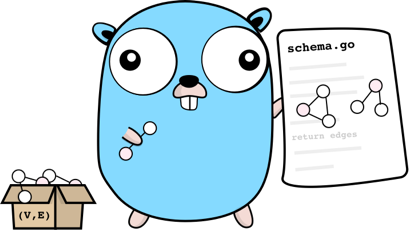Tutorial Overview

Go ent is a powerful and easy-to-use ORM framework developed by Facebook. It allows developers to define data models in the Go language and then transform these models into a type-safe query API using ent's code generation technology. Its advantages include:
-
Graph Structure Model:
entdefines the database schema as a graph structure, making data relationships clear and easy to maintain. - Code as Schema: Data schema is defined by writing Go code, which means you get full IDE support, including code completion and type checking.
-
Type Safety: Because it is based on code generation,
entprovides static type checking, reducing the possibility of runtime errors. -
Easy to Query: Whether it's a simple query or a complex graph traversal,
entprovides a simple and powerful API to accomplish tasks. - Extensibility: If the default functionality is not sufficient to meet specific requirements, Go templates can be used for extension, giving developers more freedom.
Topics Covered
In this tutorial, we will cover the following topics:
- Getting Started: Explaining how to install the ent framework, initialize the project, and perform basic CRUD operations.
-
Schema Definition:
- Field Definition: How to define fields in the model.
- Index Definition: How to define indexes in the ent framework.
- Code Generation: Introduction to the usage of ent's built-in code generation tools.
- Database Connection: Explaining how to configure and connect different types of databases in the ent framework.
- Entity Operations: Introduction to creating, querying, updating, deleting, and paging operations around ent entities.
- Defining Entity Associations: Introduction to the relationships between entities.
- Entity Association Querying: Explaining how to perform join queries (graph traversal) and how to do eager loading.
- Eager Loading in Association Queries: Explaining the Eager Loading feature in association queries.
- Transactions: Methods for maintaining data consistency using transactions in ent.
- Aggregation Analysis: Implementing SQL-like statistical analysis capabilities through ent.
- Migration Mechanism: Detailed explanation of the migration feature of the ent framework and how it maintains table structure.
- Hooks Mechanism: Explanation of the hooks mechanism in ent and its use cases.